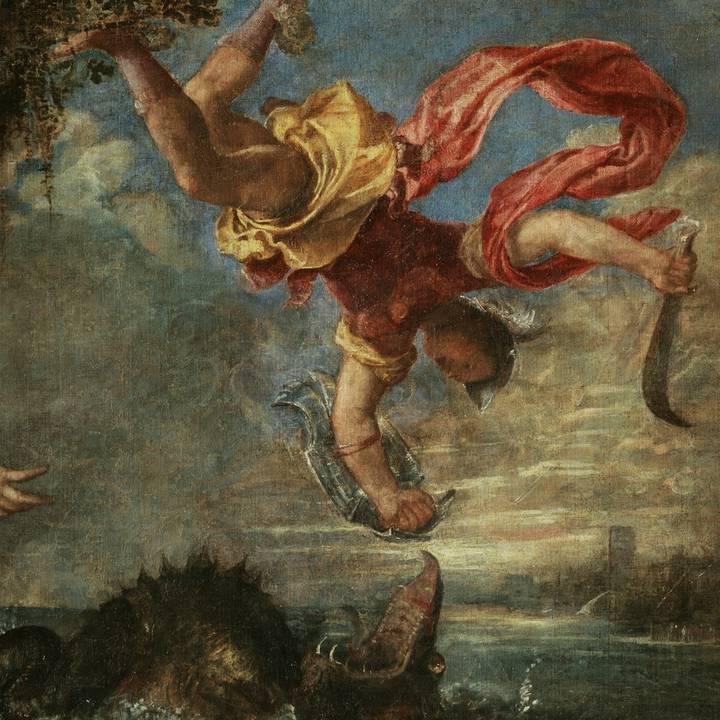Meet the Expert: The Court of Philip IV
Decorating a Spanish Palace
Although the reign of Philip IV was troubled by a stiff decline of the Spanish Empire, the loss of colonies and war, it was nevertheless a fantastic time for the arts, which later became known as the Golden Age of Spanish Art. Philip was an avid collector and patron of the arts. The building and decoration of the Buen Retiro Palace was his greatest artistic enterprise.
Built between 1633–40 under the supervision of his Prime Minister, Count-Duke Olivares, the palace was decorated with works by the greatest artists of the time, such as Spain’s own Velázquez and Zurbarán, as well as famous artists from other European countries.
- Natalia Muñoz-Rojas, Enriqueta Harris Frankfort Curatorial Assistant
Peter Paul Rubens, The Holy Family with Saint Elizabeth and Saint John the Baptist, 1614–15 (P81)
Amongst the most important artists who worked for Philip IV was Peter Paul Rubens. The Flemish painter and diplomat was appointed court painter to the Archdukes Albert and Clara Eugenia, the governors of the Spanish Netherlands, for whom he painted The Holy Family with Saint John the Baptist to hang in his private oratory at the Ducal Palace in Brussels. Under their service, Rubens's career flourished: he was sent on diplomatic missions to the English and Spanish courts, and created works that would decorate the palaces of France, England, and Spain.
In 1628, he was summoned by Philip IV to discuss the peace treaty between Spain and the Low Countries. This was to be one of the most productive years of his life, to the point where the painter and treatise writer Francisco Pacheco, later described Rubens’s feverish activity in his book The Art of Painting: “It seems incredible that he could have painted so much in so little time.” During his one-year stay in Madrid, Rubens painted around forty works — some at the behest of the king, others for the Infanta Isabella Clara Eugenia, and others for himself, including numerous copies of Titian’s paintings in the royal collection.
Find out more about The Holy Family with Saint Elizabeth and Saint John the Baptist
Domenichino, A Sybil, early 1620s (P131)
The Kingdom of Naples and Sicily was also under Spanish rule and therefore Spanish rulers had exposure to Italian artists. Consequently, Italian artists such as Domenichino, whose work for the Roman curia made him one of the most sought-after painters of his time, were also amongst the ranks of artists who contributed to the decoration of the Buen Retiro.
When he moved to Naples towards the end of his life, Spanish envoys were quick to enrol him and other Italians to create a series of paintings depicting the History of Rome. These would decorate one of the galleries in the newly built Buen Retiro Palace. Though documents relating to this series are scarce, we know Domenichino painted at least one painting for it: Funeral Rites for a Roman Emperor which Spain’s Viceroy in Naples, Count of Monterrey commissioned from him in 1634.
Alessandro Algaldi, Jupiter Victorious over the Titans: ‘Fire’ (S161); and June Controlling the Winds: ‘Air’, cast c. 1655–81 (S162)
The Bolognese sculptor Alessandro Algardi worked in Rome alongside Domenichino and, much like the painter, he also received numerous commissions from Philip IV. These two firedogs are reproductions of models originally designed in 1649–50 by Algardi for the Spanish Monarch. According to Algardi’s biographer, Alessandro Bellori, it was the painter Diego Velázquez during his stay in Rome who commissioned the firedogs on behalf of the king.
A second commission followed, though it was left unfinished by the master and later completed by two of his assistants, for a second pair representing Neptune and Cybele. The four figures were then adapted to serve as fountain decorations representing the Elements: Jupiter represented Fire, Juno Air, Neptune Water, and Cybele Earth. They were sent to the royal residence at Aranjuez, near Madrid, but unfortunately were lost during the Second World War.
Take a closer look
Nicolas Poussin, A Dance to the Music of Time, c. 1634–36 (P108)
Having trained in Paris, Poussin travelled to Rome to study the masters of Antiquity and stayed there for much of his career. He worked for erudite collectors, creating allegorical scenes such as A Dance to the Music of Time or historical scenes, such as The Hunt of Meleager which he painted for Philip IV as part of the series on the History of Ancient Rome that was to decorate the Buen Retiro Palace. Much like in the Wallace painting, The Hunt of Meleager is an evocation of Antiquity. Its classical setting, clothing, and weapons made it an ideal addition to this series of historical paintings.
As well as contributing to the series depicting scenes of ancient Rome, he painted canvases for the series of classical landscapes also intended for the Retiro. The fact that he was commissioned to paint several paintings of different genres demonstrates how well regarded he was in the Spanish Court.
Claude Lorrain, Landscape with Apollo and Mercury, 1660 (P114)
The Buen Retiro Palace was decorated with some two hundred landscapes. Whilst many of these were bought from private collectors, a great number of them were also executed purposefully for the palace. The most notable landscapes were painted by Claude Lorrain. Working alongside other artists, including Poussin, Claude created a series of landscapes with hermits and Italianate landscapes, now in the Prado Museum.
Like in his Landscape with Apollo and Mercury, the figures in the Retiro paintings are submerged in splendid panoramas. The subject matter, whether classical or religious, seems to be an excuse to paint grand poetic landscapes. Together, they would have created a beautiful ensemble, perfect for the Buen Retiro, a palace renowned for the beauty of its gardens.
Find out more about Claude Lorrain's Landscape with Apollo and Mercury











